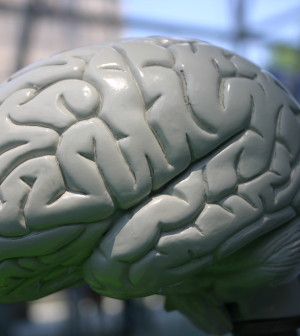- Skip Storing This Everyday Product in the Fridge Door
- Green Tea + B3 Pairing May Boost Brain Health
- Navigating Your Midlife Crisis: Embracing New Possibilities
- City Raccoons Showing Signs of Domestication
- Mapping the Exposome: Science Broadens Focus to Environmental Disease Triggers
- One Week Less on Social Media Linked to Better Mental Health
- Your Brain Changes in Stages as You Age, Study Finds
- Some Suicide Victims Show No Typical Warning Signs, Study Finds
- ByHeart Formula Faces Lawsuits After Babies Sickened With Botulism
- Switch to Vegan Diet Could Cut Your Greenhouse Gas Emissions in Half
Earthquake Survivors With PTSD Show Brain Differences

There appear to be significant differences in the brains of earthquake survivors with and without post-traumatic stress disorder (PTSD), a new study by Chinese researchers finds.
The research included 67 survivors who had PTSD and 78 who didn’t. PTSD is an anxiety disorder that develops after a traumatic event. All of the study volunteers had MRI brain scans.
The researchers saw changes in the thickness and volume of the cerebral cortex. The cerebral cortex is the outer layer of the brain — also called gray matter, according to the U.S. National Institutes of Neurological Disorders and Stroke.
People with PTSD had more thickness in the gray matter in certain areas of the brain than people who didn’t have PTSD. The researchers also noted less volume in other areas of the brain in people with PTSD than in those without the disorder.
The study was published online March 1 in the journal Radiology.
“Our results indicated that PTSD patients had alterations in both gray matter and white matter in comparison with other individuals who experienced similar psychological trauma from the same earthquake,” senior study author Dr. Qiyong Gong said in a journal news release. Gong is from the Huaxi MR Research Center at the West China Hospital of Sichuan University in Chengdu, China.
One of the areas of the brain that changed in people with PTSD plays an important role in visual processing. This area is more active in people with PTSD when doing memory tasks, Gong said.
The researchers noted that these changes may be related to the visual flashback symptoms that occur in PTSD.
These findings may help identify people who are more likely to develop chronic PTSD after a traumatic event, the researchers said.
“It is particularly important to compare PTSD patients to similarly stressed individuals in order to learn about the specific brain alterations directly related to PTSD that occur above and beyond general stress responses,” Gong said.
More information
The U.S. National Institute of Mental Health has more on PTSD.
Source: HealthDay
Copyright © 2025 HealthDay. All rights reserved.










